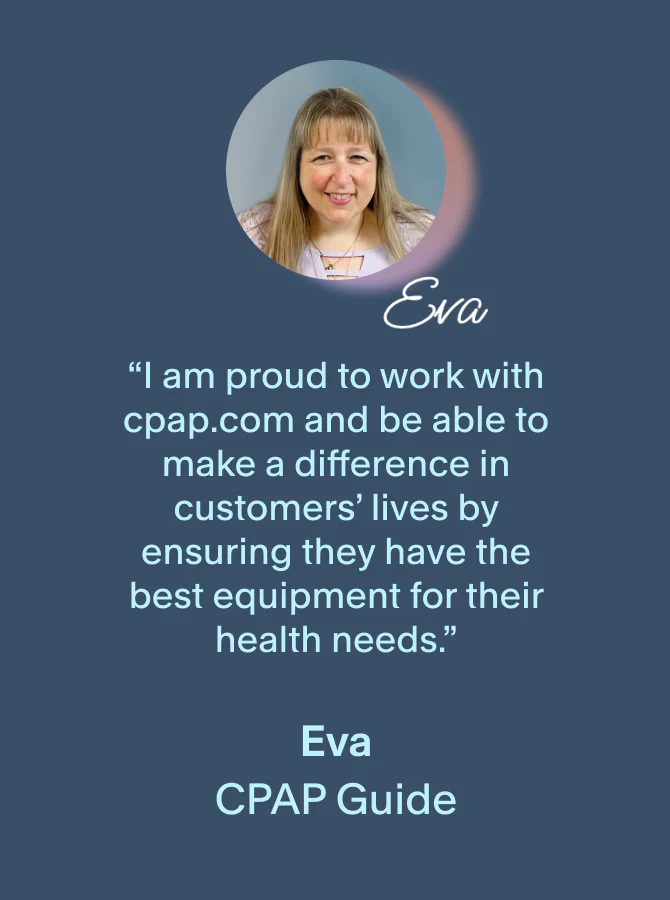Our content undergoes rigorous expert review, evidence-based research, and regular updates for accuracy.
💡 Key Takeaways
- Understanding Aerophagia: Aerophagia is a condition where excessive air enters your gastrointestinal tract, causing symptoms like stomachache, bloating, and flatulence.
- Common Causes: The issue can arise from incorrect CPAP pressure settings, nasal congestion, mouth breathing, or problems with exhalation. Each of these factors can lead to air being forced into your esophagus instead of your lungs.
- Solutions to Consider: Adjusting your CPAP pressure settings, considering a different mask type, and enabling expiratory pressure relief features can help alleviate symptoms. Sleeping at an incline may also help.
- Alternative Machines: BiPAP and APAP machines offer different air pressure delivery systems that may reduce aerophagia symptoms. These machines adjust the air pressure automatically or provide less air during exhalation, making it less likely for air to enter your esophagus.
- Consult Your Doctor: If you're experiencing discomfort due to aerophagia, it's crucial to consult your healthcare provider for personalized solutions. Your CPAP settings may need to be optimized to better suit your needs.
Continuous positive airway pressure (CPAP) therapy provides a consistent flow of air to help keep your upper airway open to prevent it from collapsing while you're sleeping. When tolerated and patients are compliant, it's extremely effective for preventing Sleep Apnea.
Some people experience CPAP-related gas due to aerophagia, which is one of a handful of common CPAP side effects you should be aware of when starting therapy.
What is Aerophagia?
Aerophagia definition:
Aerophagia is excessive air swallowing. It's a condition that occurs when you have air entering your gastrointestinal tract, including your intestines and stomach. As this air builds up, it can cause significant discomfort in your bowels and belly. The most common aerophagia symptoms are:
- Stomachache
- Belly bloating
- Flatulence
- Heartburn and acid reflux
- Burping
- An uncomfortable "full" feeling
Anybody can experience aerophagia, even individuals who don't use CPAP and those who don't have Sleep Apnea.
Causes of Swallowing Air with CPAP
Some causes of aerophagia may include:
- Pressure is set too high: Your CPAP pressure could be set too high or higher than you need. The extra air you get has no place else to go, but to your esophagus and then belly.
- Pressure is set too low: You may have your pressure set too low where it's too inadequate to resolve your apnea episodes. As you're trying to obtain more air in your lungs, you end up quickly gulping air which is forced into your esophagus instead.
- Nasal congestion: You could have nasal congestion from allergies, a cold or the flu. When you have a stuffy nose, you might not be able to get the right CPAP air pressure you require, therefore you gulp the air by mouth and there it goes, down into your esophagus.
- Mouth breathing: You might be a mouth breather and wears a traditional nasal mask. When your mouth opens up while you're sleeping, the CPAP machine may not be able to deliver the air to your longs, but rather the air escapes through your mouth. Your apnea episodes aren't being corrected, therefore in your unconscious panic; you could suddenly experience a choking sensation and gulp the air in rapidly, forcing it into your esophagus.
- Exhalation problems: You might be having trouble exhaling over the consistent air pressure CPAP delivers. This is particularly hard for individuals using mid- to high-CPAP pressures. When you inhale high pressures, it might be simple, but exhaling might cause panic, anxiety and a feeling of choking or suffocation. When this occurs, you might fall out of your natural breathing rhythm and start hyperventilating. This may lead to quickly gulping or sucking in air, forcing it into your esophagus instead of your lungs.
Solutions for Swallowing Air with CPAP
If you're swallowing air with CPAP, here are some aerophagia solutions you can try:
1. Check the Pressure Settings
If you think your CPAP device's air pressure isn't adequate (too low or too high), talk with your doctor or sleep professional about a pressure change. Confirm the machine is set correctly per your doctor's prescription with your CPAP provider. Occasionally, mistakes can occur and your CPAP won't be set correctly.
2. Check Your Mask
Figure out if you're using the wrong mask. For instance, a nasal mask isn't the best choice if you're a mouth breather. Your mask might not be the best style or size for your face. If you're experiencing pressure point soreness from the straps being too tight or a frequent mask leak, consider picking a different mask.
Ensure you know how to fit and adjust your mask properly for the best seal. Once you've selected the best mask style and size for your face, you need to properly adjust it before going to sleep. Turn your machine on and put the mask on your face with loose straps. Lie down in the same position you normally do when sleeping with head on the pillow. Then, pull the straps slowly until you acquire a good seal. If there's a dual cushion in your mask, it will need to be seated.
Once you've adjusted and fitted the mask, you'll pull the mask out gently and away from your face to "seat" it and allow the dual cushions to properly inflate. Gently place the mask back onto your face. You should know by how it feels if it's a comfortable seal.
3. Obtain Expiratory Pressure Relief
Most CPAP machines today have expiratory pressure relief features. They may be called BIFLEX or AFLEX, depending on the machine brand. This feature reduces air pressure automatically upon exhalation and could help decrease or eliminate aerophagia. Talk with your CPAP provider to see if you have this feature enabled on your machine. You need to control this feature manually, so be sure you ask how to use it.
4. Adjust Your Sleep Position
Your sleep position is another essential factor. If you normally sleep on your back, it might be better to sleep at an incline which can prevent a "kink" in your esophagus that could cause it to easily allow air flow into your stomach. Many individuals find sleeping with their head up at a 30 to 40 degrees angle to be helpful. You can use a pillow wedge to accomplish this.
5. Try a BiPAP Machine
Bilevel positive airway pressure machines, or BiPAP machines can help relieve aerophagia symptoms. For individuals suffering from aerophagia as a CPAP side effect, the BiPAP machine's bilevel delivery system means you'll have less air during exhalation being "pumped in" and this means it's less likely you'll have air entering your esophagus instead of your windpipe.
6. Try an APAP Machine
Automated positive airway pressure, or APAP machines, connect with a non-invasive mask connected to a pressure generator designed for delivering air pressure to maintain open airways while you're sleeping.
In one study, switching from a CPAP machine to an APAP machine led to reduced aerophagia symptom severity. The group of patients being treated with APAP saw substantially decreased median therapeutic pressure levels when compared with the patients using CPAP.
Takeaway
Figuring out what's causing your aerophagia is essential to resolve it. Extreme air swallowing can be very uncomfortable, particularly if your CPAP settings aren't optimized. Be sure to talk with your CPAP sleep doctor about this problem to help determine the causes and solutions unique to you. You can also call us here at CPAP.com at 1-800-356-5221 or use our live chat feature to talk to one of our CPAP experts.











